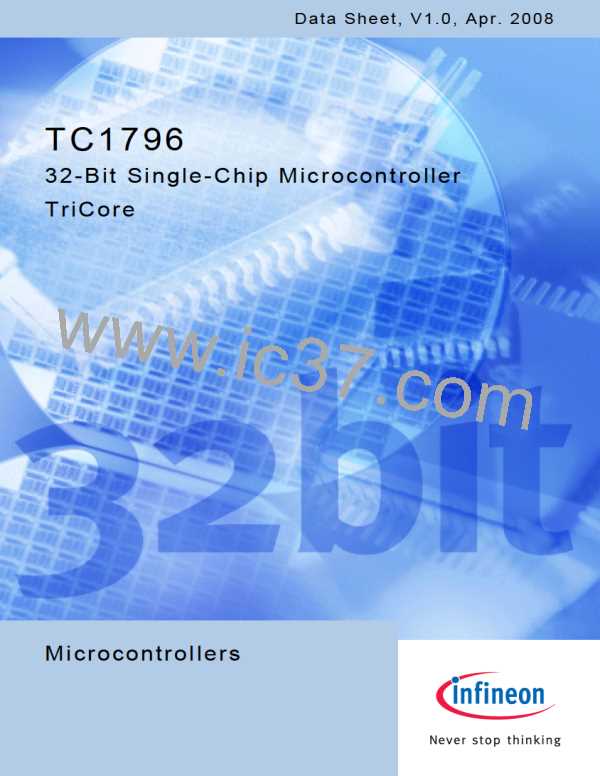TC1796
Functional Description
or can be received from an external master (Slave Mode). Data width, shift direction,
clock polarity and phase are programmable. This allows communication with SPI-
compatible devices. Transmission and reception of data is double-buffered. A shift clock
generator provides the SSC with a separate serial clock signal. One slave select input is
available for Slave Mode operation. Eight programmable slave select outputs (chip
selects) are supported in Master Mode. The I/O lines of the SSC0 module are connected
to dedicated device pins while the SSC1 module I/O lines are wired with general purpose
I/O port lines.
Features
•
Master and Slave Mode operation
– Full-duplex or half-duplex operation
– Automatic pad control possible
Flexible data format
•
– Programmable number of data bits: 2 to 16 bits
– Programmable shift direction: LSB or MSB shift first
– Programmable clock polarity: Idle low or high state for the shift clock
– Programmable clock/data phase: data shift with leading or trailing edge of the shift
clock
•
•
Baud rate generation from 37.5 Mbit/s to 572.2 Bit/s (@ 75 MHz module clock)
Interrupt generation
– On a transmitter empty condition
– On a receiver full condition
– On an error condition (receive, phase, baud rate, transmit error)
Flexible SSC pin configuration
•
•
•
One slave select input SLSI in slave mode
Eight programmable slave select outputs SLSO in Master Mode
– Automatic SLSO generation with programmable timing
– Programmable active level and enable control
SSC0 with 8-stage receive FIFO (RXFIFO) and 8-stage transmit FIFO (TXFIFO)
– Independent control of RXFIFO and TXFIFO
– 2- to 16-bit FIFO data width
•
– Programmable receive/transmit interrupt trigger level
– Receive and Transmit FIFO filling level indication
– Overrun error generation
– Underflow error generation
Data Sheet
51
V1.0, 2008-04

 INFINEON [ Infineon ]
INFINEON [ Infineon ]